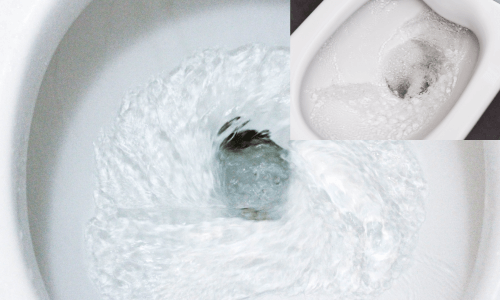
When i flush my toilet, it fills up with water then slowly drains
A toilet that fills up with water and then slowly drains is a common plumbing issue that can disrupt your daily routine and cause concern about potential underlying problems. This problem often indicates issues with the toilet’s drainage system, venting, or flushing mechanism. In this comprehensive guide from Local Plumber in Florida, we’ll explore the causes of this issue and provide expert advice on how to troubleshoot and fix it effectively.Understanding the Problem
When a toilet fills up with water and then drains slowly, it can be both frustrating and concerning. The symptoms typically include:- Rapid Filling: After flushing, the toilet bowl fills up with water quickly, sometimes almost to the rim.
- Slow Drainage: The water in the bowl gradually drains, often leaving behind a small amount of water or a slow drain rate.
Understanding the root cause of these symptoms is crucial for implementing an effective solution.
Common Causes of a Toilet That Fills Up and Slowly Drains
Several factors can contribute to a toilet that fills up and then drains slowly. Here are some common causes to consider:1. Clogged Drain Line
A common reason for a slow-draining toilet is a partial or full blockage in the drain line. Over time, debris, toilet paper, or foreign objects can accumulate and restrict water flow, leading to slow drainage.2. Blocked Vent Pipe
The vent pipe is an essential part of the plumbing system that allows air to enter the pipes, ensuring proper drainage and preventing vacuum formation. A blocked or clogged vent pipe can disrupt the flushing and draining process.3. Faulty Flapper Valve
The flapper valve controls the flow of water from the tank to the bowl during a flush. If the flapper valve is faulty, it may not open fully or close properly, leading to incomplete flushing and slow drainage.4. Low Water Level in the Tank
The water level in the tank affects the flush’s efficiency. If the tank does not fill to the proper level, the flush may be weak, causing the toilet to drain slowly.5. Blocked Toilet Trap
The toilet trap is the curved section of the toilet bowl that prevents sewer gases from entering the home. A blockage in the trap can restrict water flow and cause slow drainage.6. Mineral Build-Up
Hard water can lead to mineral build-up around the toilet’s internal components, such as the flush valve or rim holes, affecting the flushing performance and causing slow drainage.Troubleshooting and Fixing the Issue
Follow these steps to diagnose and address the problem with a toilet that fills up and drains slowly:Step 1: Check for a Clogged Drain Line
- Plunge the Toilet: Use a toilet plunger to attempt to dislodge any debris that may be causing the blockage. Ensure the plunger covers the drain hole completely and use firm, consistent plunges.
- Use a Toilet Auger: If plunging does not resolve the issue, use a toilet auger (plumbing snake) to reach further into the drain line and break up or remove the obstruction. Insert the auger into the drain and twist the handle while pushing forward.
- Inspect for Blockages: If the auger encounters resistance, it may be pulling out debris or indicating a blockage. Remove any visible debris and continue to check for obstructions.
Step 2: Inspect the Vent Pipe
- Check for Visible Blockages: Look for any visible obstructions around the vent pipe’s exterior, such as leaves, nests, or debris. Clear any blockages if present.
- Use a Plumbing Snake: If you suspect a blockage within the vent pipe, use a plumbing snake to reach and clear the obstruction. Insert the snake into the vent and carefully feed it through the pipe.
- Professional Inspection: If the vent pipe remains blocked or you are unable to access it, consider contacting a professional plumber for a thorough inspection and cleaning.
Step 3: Examine the Flapper Valve
- Check for Proper Operation: Lift the tank lid and observe the flapper valve’s operation during a flush. Ensure it opens fully and closes completely after flushing.
- Inspect for Wear and Tear: Examine the flapper valve for signs of wear, such as cracks, warping, or mineral deposits. If the flapper is damaged, replace it with a new one.
- Adjust the Chain: Ensure the chain connecting the flapper to the flush lever is not too tight or too loose. Adjust the chain length to allow for proper flapper movement.
Step 4: Adjust the Water Level in the Tank
- Check the Water Level: Use a measuring tape or ruler to check the water level in the tank. It should be approximately 1 inch below the overflow tube.
- Adjust the Fill Valve: If the water level is too low, adjust the fill valve or float mechanism to increase the tank’s water level. Follow the manufacturer’s instructions for adjusting the fill valve or float.
- Inspect for Leaks: Check for any leaks around the fill valve or tank components. Repair or replace any damaged parts as needed.
Step 5: Clear the Blocked Toilet Trap
- Plunge the Toilet: Use a plunger to attempt to dislodge any blockage in the toilet trap. Ensure the plunger creates a tight seal around the drain hole.
- Use a Toilet Auger: If plunging does not resolve the issue, use a toilet auger to reach into the trap and clear the obstruction. Insert the auger and twist the handle while pushing forward.
- Inspect for Obstructions: If the auger encounters resistance, it may indicate a blockage in the trap. Remove any visible debris and continue to check for obstructions.
Step 6: Address Mineral Build-Up
- Clean the Rim Holes: Mineral deposits can build up around the rim holes of the toilet bowl. Use a toilet brush or a small brush to scrub the rim holes and remove any mineral build-up.
- Use Vinegar and Baking Soda: Pour a mixture of vinegar and baking soda into the toilet bowl and let it sit for several hours. This can help dissolve mineral deposits and improve flushing performance.
- Clean the Flush Valve: If mineral build-up affects the flush valve, clean it with a vinegar-soaked cloth or sponge. Remove any residue or deposits that may be affecting the flush.
Preventive Measures
To prevent future issues with your toilet, consider the following preventive measures:- Avoid Flushing Non-Flushable Items: Only flush toilet paper and human waste. Avoid flushing items like wipes, feminine hygiene products, or paper towels.
- Regular Maintenance: Perform regular maintenance on your toilet, including cleaning the tank, inspecting components, and checking for leaks.
- Install a Vent Pipe Cover: If your vent pipe is prone to blockages, consider installing a vent pipe cover to prevent debris from entering the pipe.
- Use a Water Softener: If you have hard water, consider installing a water softener to reduce mineral build-up and improve overall plumbing performance.
- Schedule Professional Inspections: Periodically schedule professional inspections of your plumbing system to identify and address potential issues before they become major problems.
Maintaining your toilet and addressing drainage issues promptly will help ensure that your plumbing system remains in good condition and functions efficiently. For expert plumbing services and advice in Florida, trust the experienced team at Local Plumber. Contact us today to learn more about maintaining your water heater and how it can benefit your home and family. Email us at services@local-plumber.com or call us at (833) 247-7667 (POOP).
Related Tags:




